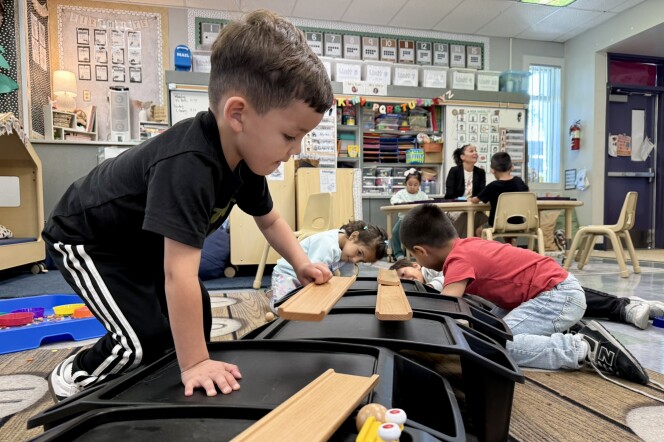With our free press under threat and federal funding for public media gone, your support matters more than ever. Help keep the LAist newsroom strong, become a monthly member or increase your support today.
This is an archival story that predates current editorial management.
This archival content was written, edited, and published prior to LAist's acquisition by its current owner, Southern California Public Radio ("SCPR"). Content, such as language choice and subject matter, in archival articles therefore may not align with SCPR's current editorial standards. To learn more about those standards and why we make this distinction, please click here.
Video: Here's What It Was Like To Ride On L.A.'s Original Rail System
It's one thing to know that Los Angeles, at one point, had the most extensive network of urban rail transportation in the entire country. It's another thing to see and hear it. The above film was produced in 1961 by the Glendale-based Interurban Press, and portrays the rattly downtown L.A. to Long Beach leg of the Pacific Electric Railway. Service on this line began in 1901.
There aren't that many people around today who remember the streetcars as they once were. Reaching their apex during the 1920s and 30s, when more than 1,100 miles of rail crisscrossed Southern California, the streetcars signify an incarnation of a Los Angeles now long-gone. The Long Beach line was shuttered less than two weeks after the above video was produced, concluding 60 years of Pacific Electric service that once connected San Bernardino to Santa Monica, and San Pedro to San Fernando.
While the video might appeal more to history nerds like myself, watching it offers a unique look into Los Angeles at a transformative moment in its history. As you ride south from downtown L.A. towards Long Beach, you pass beneath the under-construction Santa Monica Freeway (later designated I-10). Contrary to common belief, L.A. was not always a car town.
But, viewed in this context, it's not hard to understand why Angelenos surrendered the streetcars in favor of the personal car. Compared to the comfort and privacy of a personal car, the trains were bumpy, noisy and uncomfortable. While Los Angeles may once have depended upon trains to get around, the city of the future was one where every family owned a home with a two-car garage; the car signified personal independence and supreme comfort, and the streetcar signified and uncouth past.
Founded in 1901 by Henry Huntington, the Pacific Electric Railway was originally schemed by Huntington as a vehicle for real estate development. Huntington believed that millions of acres of Southern California land could be transformed into (and then sold) as single family home-style housing if people had a reliable transportation service that connected their 'streetcar suburb' to the city center.
The plan worked, and it wasn't long before L.A. began sprawling into the metropolis we know it today. While common memory tends to equate Los Angeles' sprawl and scale with the car, the above map is from 1927. The car certainly facilitated the region's eventual infill, but Southern California was already a land of suburbs before Angelenos embraced driving en masse.
By the 1950s, the streetcar companies faced financial insolvency. Declining ridership numbers, auto-traffic impeding reliable service and the fact that the streetcars weren't actually built to be profitable in their own right (remember, Huntington and real estate) meant train lines began folding and consolidating at an ever-quickening rate. Though the idea of a conspiracy by car, oil and tire companies to purchase and shutter streetcar lines has worked its way into popular memory, the reality of the end of streetcar's is much less intentional. It just happened.
Funnily enough, Los Angeles today is realizing that it might have erred when it collectively decided to erase rail transportation from its cityscape. In 1990, rail service along the Los Angeles to Long Beach corridor resumed with the opening of the Metro (then RTD) Blue line. Since then, L.A. has built more than 100-miles or rail, often using right-of-ways originally used by streetcars nearly 100 years earlier. The Expo Line, for example, is built along the right-of-way used once by the Santa Monica Air Line, mentioned briefly towards the beginning of the video above. Twist your mind around the fact the amount of time between when the L.A. to Long Beach opened and closed is less than the amount of time between its closure and 2016.
As for beyond 2016, the rail will continue to return. If Measure M passes this November, Los Angeles' Metro Map will, one day, closely resemble that Pacific Electric map just above.







